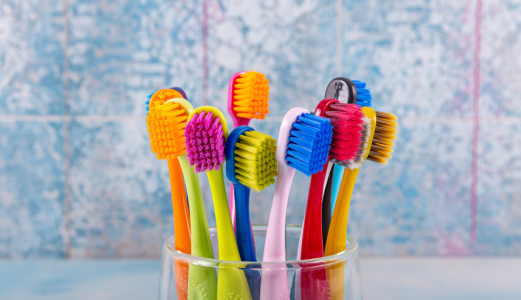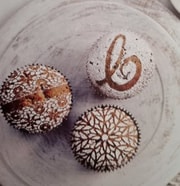Are you showering in bacteria? Shocking study exposes the microbial dangers lurking in your bathroom!
By
Gian T
- Replies 2
When we step into the shower or brush our teeth, we're engaging in what we believe to be clean, hygienic rituals. However, a recent study has revealed that these daily routines might be exposing us to a microscopic world teeming with life, and not all of it is friendly. The warm, moist environments of our shower heads and toothbrushes are perfect breeding grounds for microbes, including hundreds of viruses that have made these everyday items their home.
Before you recoil in horror at the thought of bacteria-laden water droplets or a toothbrush teeming with germs, it's important to understand the nature of these microbes. The study, led by Erica Hartmann, an associate professor at Northwestern University’s McCormick School of Engineering, has identified a vast array of bacteriophages, or phages for short. These are not the viruses that cause illnesses like the common cold or flu; rather, they are viruses that prey on bacteria.
The study, which involved analysing biofilms from 34 toothbrushes and 92 shower heads, has shed light on the incredible biodiversity that exists within our homes. Bacteriophages are fascinating entities; each one is a tiny, tripod-looking virus that has evolved to hunt and consume a specific bacterial species. 'The number of viruses that we found is absolutely wild,' Hartmann stated, emphasising the untapped biodiversity that surrounds us.
Our members at the Seniors Discount Club might be wondering why this matters. Well, these findings are not just a curiosity; they have significant implications for public health. Bacteriophages are being explored in clinical trials as a potential solution to the growing problem of antibiotic resistance. By targeting and killing specific pathogens, phages could lead to the development of new drugs that treat antibiotic-resistant superbugs without harming the beneficial bacteria in our bodies.
This is particularly crucial as antimicrobial-resistant infections are on the rise, with more than 2.8 million cases occurring each year in the United States alone. The World Health Organization has labelled antibiotic resistance as one of the most significant global public health threats, potentially complicating standard medical treatments like surgeries and chemotherapy.
The study's researchers sequenced the DNA of bacteria and their corresponding phages, using complex computer analyses to uncover a massive amount of information about the microbial life in our bathrooms. They identified 614 different viruses, though they believe many more exist, as almost every sample contained a unique constellation of microbes.
Interestingly, the microbes found on shower heads often originated from water sources, while those on toothbrushes came from a mix of the human mouth and the surrounding environment. Hartmann hypothesised that bacteria from your mouth could transfer to your toothbrush, bringing their viruses with them, which could then continue to evolve on the toothbrush itself.
While the idea of our homes being full of microbes might seem unsettling, Hartmann encourages us to appreciate these tiny organisms. Microbes play essential roles in our lives, aiding in digestion and protecting against infection. They are not just a cause for concern but also a source of wonder and potential biotechnological advancement.
So, what can we do to ensure our bathrooms are as clean as possible? Regularly cleaning and disinfecting shower heads and replacing toothbrushes every three to four months or after an illness can help reduce the microbial load. It's also wise to store toothbrushes in a way that allows them to dry thoroughly between uses, as dry conditions are less hospitable to bacteria and viruses.

At the Seniors Discount Club, we understand the importance of staying informed about health and hygiene. We invite you to share your thoughts and experiences. Have you ever considered the microbial life in your bathroom? Will this study change your cleaning habits? Let's discuss the fascinating and unseen world that exists right under our noses – or, in this case, right above our heads and in our hands.
Before you recoil in horror at the thought of bacteria-laden water droplets or a toothbrush teeming with germs, it's important to understand the nature of these microbes. The study, led by Erica Hartmann, an associate professor at Northwestern University’s McCormick School of Engineering, has identified a vast array of bacteriophages, or phages for short. These are not the viruses that cause illnesses like the common cold or flu; rather, they are viruses that prey on bacteria.
The study, which involved analysing biofilms from 34 toothbrushes and 92 shower heads, has shed light on the incredible biodiversity that exists within our homes. Bacteriophages are fascinating entities; each one is a tiny, tripod-looking virus that has evolved to hunt and consume a specific bacterial species. 'The number of viruses that we found is absolutely wild,' Hartmann stated, emphasising the untapped biodiversity that surrounds us.
Our members at the Seniors Discount Club might be wondering why this matters. Well, these findings are not just a curiosity; they have significant implications for public health. Bacteriophages are being explored in clinical trials as a potential solution to the growing problem of antibiotic resistance. By targeting and killing specific pathogens, phages could lead to the development of new drugs that treat antibiotic-resistant superbugs without harming the beneficial bacteria in our bodies.
This is particularly crucial as antimicrobial-resistant infections are on the rise, with more than 2.8 million cases occurring each year in the United States alone. The World Health Organization has labelled antibiotic resistance as one of the most significant global public health threats, potentially complicating standard medical treatments like surgeries and chemotherapy.
The study's researchers sequenced the DNA of bacteria and their corresponding phages, using complex computer analyses to uncover a massive amount of information about the microbial life in our bathrooms. They identified 614 different viruses, though they believe many more exist, as almost every sample contained a unique constellation of microbes.
Interestingly, the microbes found on shower heads often originated from water sources, while those on toothbrushes came from a mix of the human mouth and the surrounding environment. Hartmann hypothesised that bacteria from your mouth could transfer to your toothbrush, bringing their viruses with them, which could then continue to evolve on the toothbrush itself.
While the idea of our homes being full of microbes might seem unsettling, Hartmann encourages us to appreciate these tiny organisms. Microbes play essential roles in our lives, aiding in digestion and protecting against infection. They are not just a cause for concern but also a source of wonder and potential biotechnological advancement.
So, what can we do to ensure our bathrooms are as clean as possible? Regularly cleaning and disinfecting shower heads and replacing toothbrushes every three to four months or after an illness can help reduce the microbial load. It's also wise to store toothbrushes in a way that allows them to dry thoroughly between uses, as dry conditions are less hospitable to bacteria and viruses.
Key Takeaways
- A new study has revealed hundreds of viruses living in the warm, damp environments of shower heads and toothbrushes, known as bacteriophages, which prey on bacteria.
- These bacteriophages are not harmful to humans but are being explored as a potential treatment for antibiotic-resistant infections.
- The study, conducted at Northwestern University, found that each home has a unique constellation of these viruses, indicating a high level of untapped biodiversity.
- While the presence of many microbes in our homes may seem concerning, they play essential roles in our health and have the potential for biotechnological applications.
At the Seniors Discount Club, we understand the importance of staying informed about health and hygiene. We invite you to share your thoughts and experiences. Have you ever considered the microbial life in your bathroom? Will this study change your cleaning habits? Let's discuss the fascinating and unseen world that exists right under our noses – or, in this case, right above our heads and in our hands.








